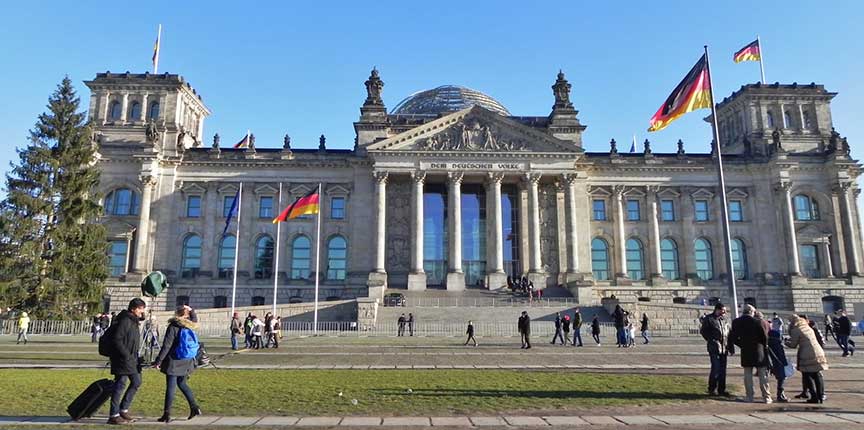Germany Reunited
On October 3rd , 1990 East and West German formally reunited. The newly reunited Germany ended the division of Germany created with the end of World War II.
The free elections in the Soviet Union and Poland were clear indications that the East German Communist regime could not endure for long. Once the borders of Hungary were opened to the West, thousands of East Germans began streaming Westward. Soon mass demonstrations took place in many East German cities demanding reform. Long-time East German leader replaced Erich Honecker with another hardliner. But that did little to stem the unrest. A German Still Germans and the world were surprised when on November 9th, 1989 Berliners who had streamed through the border crossing began tearing down the Berlin Wall and the police and the army stood by and took no action.
Once the Wall had come down there was no turning back. A reform-minded Communist Hans Modrow took office pledging reforms and free elections. In March 1990 his party suffered a crushing defeat at the polls when the Christian Democratic Party (CDU) which had pledged rapid reunification won a majority in the new parliament.
Negotiations began on reunification. The last barrier to reunification was overcome when the Soviet Union agreed to reunification in return for massive financial aid by West Germany. Both the Bundestag and the People’s Chamber approved the reunification. Under the plan, individual states of landers would join the West German Parliament and create one unified Germany. Berlin would combine into one Lander. October 3rd was chosen as the day the unification was to go into effect.
The government of West Germany had made its capital Bonn. A year after reunification it moved the Germany capital to Berlin.
 >
>